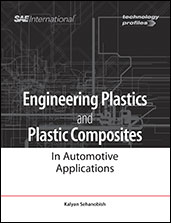Technical Paper
Evaluation of Liquid Applied Dampers: Impact of Polymer-Inorganic Interface on Performance
2017-06-05
2017-01-1877
Damping materials are applied to the vehicle body during production to provide passenger comfort by reducing noise and structural vibration through energy dissipation. Noise, Vibration, and Harshness (NVH) Engineers identify critical areas of the vehicle body for material placement. Damping materials, which include liquid applied dampers, are typically applied directly on the structure, covering large areas. These film forming materials can be spray applied using automation and, after baking, result in a cured viscoelastic damping layer on the target substrate. Typical liquid applied dampers contain an aqueous dispersion of film forming polymer which functions to bind inorganic materials together in the coating and provide a composite structure that dissipates energy. Representative damping coatings were prepared from dispersions of polymers with varying viscoelastic properties and chemical compositions.

